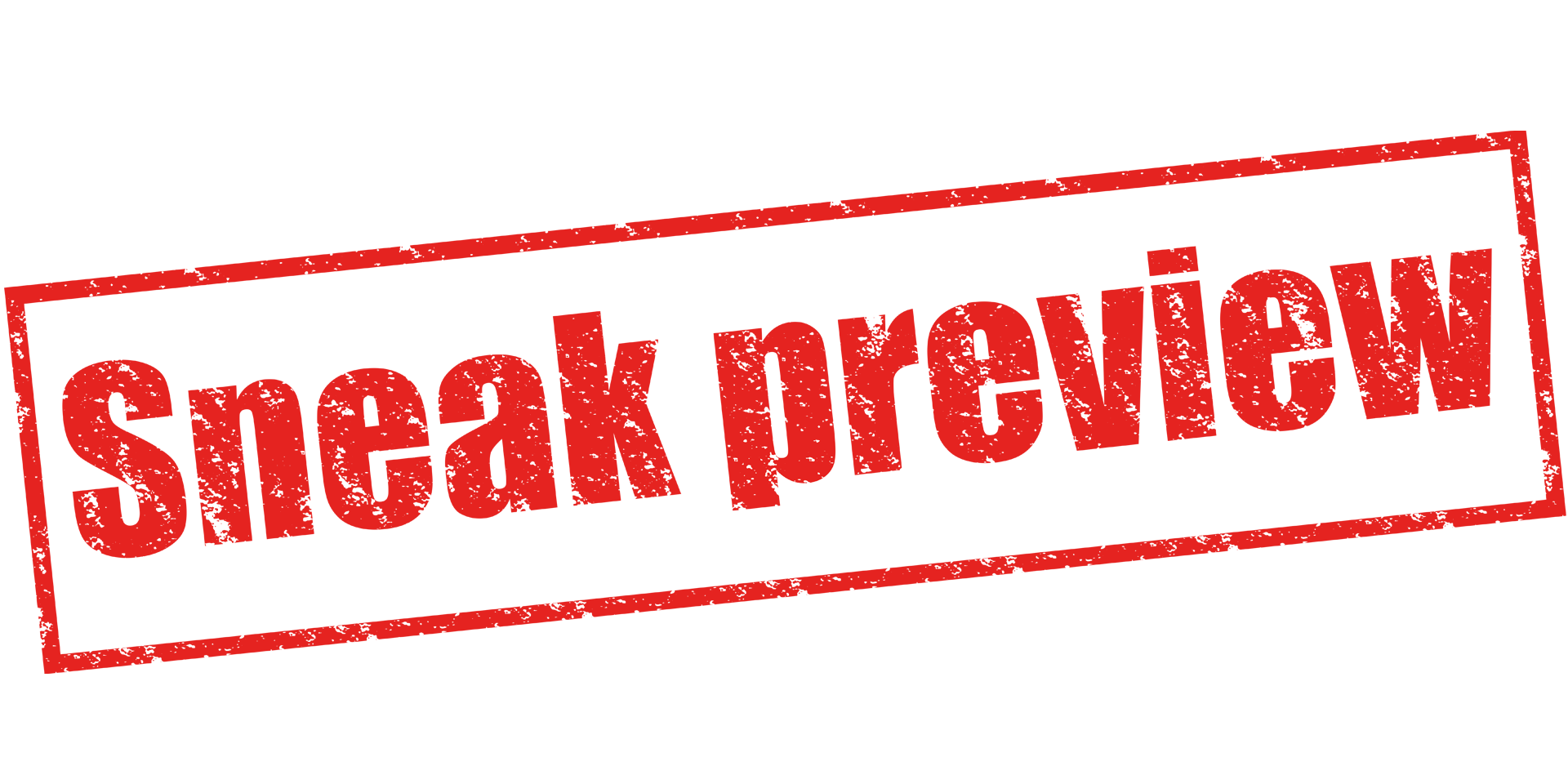Amazing Piano!
The Complete Piano Learning System
For Teenagers & Adults

Lesson #8 - Hands Together
G Position


Learning Songs By Ear
It's really not that hard. With the proper instruction anyone can learn how to play the piano by ear!
Your Instructor
Guy Faux
I teach all of my private and online piano students how to play by ear.
- There's nothing like sitting down at the piano and pulling melody notes and chords out of thin air.
- Once I show someone a few simple "play by ear" techniques, they are forever hooked.
It truly is an amazing accomplishment to learn songs without the help of sheet music! - Guy
- Click the audio icon below to hear a few more piano excerpts using some very basic chord style piano playing techniques ---- techniques that anyone can learn in less than a year!
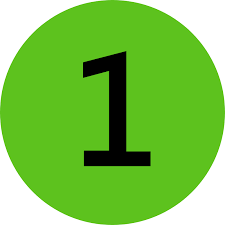
The 12 Major Keys
In the previous lesson you learned about how the scale and the key of a song are the same thing.
In Lessons 1 to 5 you were introduced to the key of C major, which has no sharps or flats. This is the easiest key to play in for beginner piano players since there are no black keys to deal with.
In Lessons 6 through 10 you will be working in the key of G major, which has 1 sharp. (see illustration below)

- There are a specific number of sharps or flats associated with each specific key or scale.
In this course, you will be introduced to a new key/scale until you have learned all 12 major keys/scales.
Below is a list of each key/scale and its specific number of sharps or flats - including the sharps and/or flats in each key.
C major - no sharps or flats
Keys/Scales With Sharps
G major - 1 sharp (F#)
D major - 2 sharps (F#, C#)
A major - 3 sharps (F#, C#, G#)
E major - 4 sharps (F#, C#, G#, D#)
B major - 5 sharps (F#, C#, G#, D#, A#)
F# major - 6 sharps (F#, C#, G#, D#, A#, E#)
C# major - 7 sharps (F#, C#, G#, D#, A#, E#, B#)
Keys/Scales With Flats
F major - 1 flat (Bb)
Bb major - 2 flats (Bb, Eb)
Eb major - 3 flats (Bb, Eb, Ab)
Ab major - 4 flats (Bb, Eb, Ab, Db)
Db major - 5 flats (Bb, Eb, Ab, Db, Gb)
Gb major - 6 flats (Bb, Eb, Ab, Db, Gb, Cb)
Cb major - 7 flats (Bb, Eb, Ab, Db, Gb, Cb, Fb)
Now I realize that in the illustration directly above, it looks like there are 15 major keys; 1 key with no sharps or flats, 7 sharp keys and 7 flat keys.
- However, C# and Db are technically the same keys. F# and Gb are the same, and Cb and B are the same. If you remove the 3 duplicates, then you are left with just 12 major keys.
It may seem a little complicated, but I've been playing the piano for close to 53 years now, and I rarely play in more than 5 or 6 keys, and they are usually the first 3 sharp keys and the first 3 flat keys.
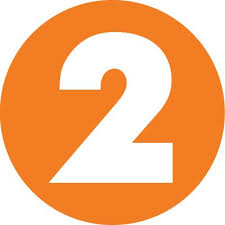
The Key Signature
Sheet music will always indicate the key of a song by displaying the number of sharps or flats at the beginning of each line of written music. The illustration below shows a few examples of key signatures.
- In the first example, a song in the key of D major has 2 sharps. This means that all the F's and all the C's will be sharp throughout the entire song.
- In the last example, a song in the key of Bb major has 2 flats. This means that all the B's and all the E's will be flat throughout the entire song.
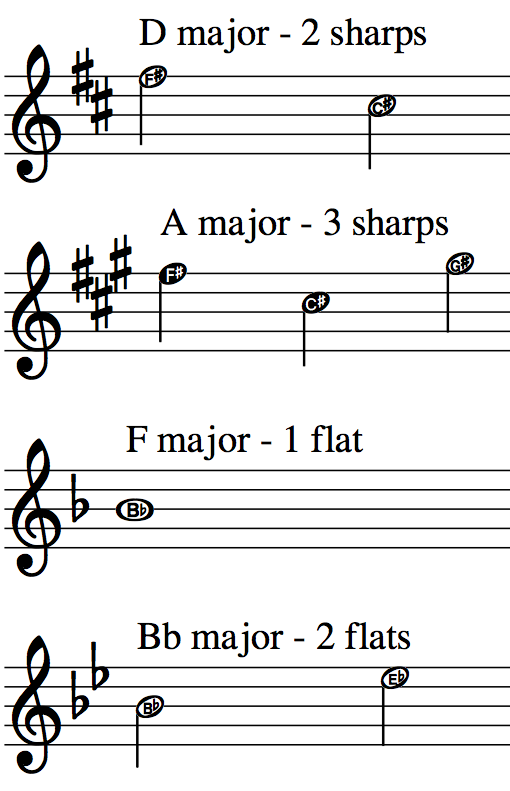
Of course, traditional sheet music doesn't have the letter names displayed inside each notehead.
However, the sheet music that we use in this course does display the letter names inside each notehead, to help get you up and playing much quicker!
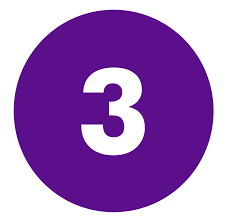
Online Piano Lessons!
One of the most significant benefits of online piano lessons is the ability to watch and listen.
Once you get accustomed to using this amazing technology to its fullest, the learning process is not only simplified, but accelerated.
- Technology will make the learning process so much easier -- especially when compared to those of us who had to take traditional piano lessons every week!
You also save about $116 every month in private lesson fees!
- Our lessons are just $12 per month - or $1 per lesson!
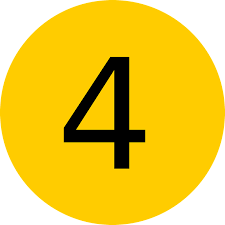
Overhead Keyboard View
Watch the video below as many times as necessary. When you're ready, go to your piano or keyboard and try playing the left-hand chords and the right-hand melody together at the same time.
- Once again, as I mentioned back in lesson 5, take your time. Playing both hands together can be a little tricky for the first few months, but with practice, you will get it.
Free Online Piano Lessons
Online Piano Lessons
Phone: (856) 662-6855
Hours
Mon. to Fri. 10 a.m. - 8 p.m. EST
Sat. 12 p.m. - 3 p.m. EST
Serving
We have students all over the world.



Cherry Hill Academy of Piano & Guitar
Copyright © 2018 - All Rights Reserved

